Vulnerable Muni
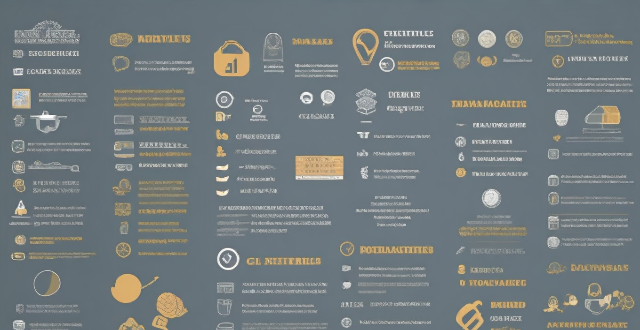
How do climate change negotiations address the needs of vulnerable communities ?
Climate change disproportionately affects vulnerable communities, such as those living in poverty or low-lying coastal areas. It is crucial for climate change negotiations to address their needs and ensure that they are not left behind in the fight against climate change. This involves recognizing the impact of climate change on these communities, incorporating vulnerability into climate change negotiations, providing access to information and participation in decision-making processes, offering financial and technical support for adaptation measures, ensuring just transitions away from high-emission industries, and promoting resilience and sustainable development. By doing so, vulnerable communities can become more resilient to future climate change impacts and contribute to a more equitable and sustainable world.

How can we involve vulnerable communities in climate action planning and implementation ?
Involving vulnerable communities in climate action planning and implementation is crucial for creating effective, equitable, and sustainable solutions to the climate crisis. Here's how we can ensure their involvement: 1. Identify and engage with vulnerable communities through community meetings, workshops, and consultations. 2. Build trust and capacity within these communities by involving them in decision-making processes, providing regular updates on progress, demonstrating transparency and accountability, and offering training programs on climate change science, policy advocacy, and project management skills. 3. Collaborate with vulnerable communities to develop solutions that address their specific needs and priorities while being culturally sensitive and respectful of local traditions and practices. 4. Regularly monitor progress towards climate action goals and evaluate the impact of initiatives on vulnerable communities by collecting data on changes in environmental conditions, economic opportunities, and social wellbeing, as well as seeking feedback from community members.

How can climate finance be made more equitable and accessible to vulnerable communities ?
Climate finance plays a crucial role in addressing the challenges posed by climate change. However, ensuring that this finance is equitable and accessible to vulnerable communities requires a multi-faceted approach. Here are some strategies that can be employed: 1. Prioritize Vulnerable Communities: Identify and target vulnerable communities, allocate adequate resources, develop targeted programs and initiatives that address their needs. 2. Enhance Capacity Building: Provide training and education on climate change mitigation and adaptation strategies tailored to the needs of vulnerable communities, build institutional capacity, strengthen partnerships between governments, civil society organizations, and community groups to ensure coordinated efforts in capacity building. 3. Promote Participatory Approaches: Encourage community participation in the design, implementation, and monitoring of climate finance projects, enhance transparency and accountability, hold stakeholders accountable for meeting agreed-upon targets and milestones related to climate finance distribution and utilization. 4. Leverage Technology and Innovation: Utilize digital platforms where vulnerable communities can access information about available climate finance opportunities and apply for funding, use mobile technology to reach remote areas and provide real-time updates on project progress and outcomes, encourage innovative solutions that address the unique challenges faced by vulnerable communities, support research and development initiatives focused on creating new tools and methodologies for improving climate finance accessibility and equity. 5. Collaborate with Stakeholders: Engage with private sector entities to leverage their resources and expertise in delivering climate finance solutions to vulnerable communities, establish public-private partnerships aimed at increasing investment in sustainable projects benefiting these communities, partner with international organizations like the World Bank or UN agencies to secure additional funding and technical support for climate finance initiatives targeting vulnerable communities, harness the expertise of international NGOs working in similar fields to share best practices and lessons learned from successful projects globally.

How do climate and environmental policies address the needs of vulnerable communities and ecosystems ?
Climate and environmental policies are essential for addressing the needs of vulnerable communities and ecosystems. These policies aim to reduce emissions and pollution, protect natural resources, build resilience and adaptation capacity, and promote environmental justice. By implementing measures such as promoting renewable energy sources, establishing protected areas, providing funding for climate adaptation projects, and ensuring equitable access to clean energy technologies, these policies can significantly improve the health and quality of life for vulnerable communities while also contributing to global efforts to combat climate change.

What role does climate justice play in addressing the impacts of climate change on vulnerable communities ?
Climate justice is crucial for addressing the disproportionate impacts of climate change on vulnerable communities. It emphasizes equity, fairness, sustainability, participation, and transparency in environmental policies and practices. Vulnerable communities face unique challenges due to limited resources and dependence on natural resources. Key principles of climate justice include equity, fairness, sustainability, participation, and transparency. Strategies for achieving climate justice involve inclusive policy making, capacity building, access to finance, technology transfer, information dissemination, strengthening institutions, and promoting resilience. Collaborative efforts at various levels can help achieve a more equitable and resilient world for all.

How does the climate emergency disproportionately affect vulnerable communities ?
The climate emergency disproportionately affects vulnerable communities, including agricultural and coastal populations, indigenous peoples, the elderly, and urban poor. These groups face loss of livelihoods, health risks, food insecurity, displacement, challenges in education and child development, gender inequalities, urban poverty, and mental health impacts. Addressing these issues requires targeted interventions to ensure these communities are not left behind in the global response to climate change.

What are some examples of communities that are particularly vulnerable to climate change ?
The text discusses how climate change affects different communities around the globe in various ways. It highlights coastal communities, island nations, Arctic regions, agricultural communities, urban poverty areas, and indigenous peoples as particularly vulnerable due to their geographical location, economic conditions, or social structures. Each of these communities face unique challenges such as rising sea levels, storm surges, permafrost thaw, loss of sea ice, environmental changes, droughts, extreme weather events, pests and diseases, inadequate infrastructure, high temperatures, social inequalities, cultural significance of land displacement, and loss of traditional livelihoods. The text suggests that these communities require targeted support and adaptation strategies to build resilience against the ongoing and anticipated effects of climate change.

How can we ensure that climate change adaptation measures are equitable and just ?
The topic of ensuring equitable and just climate change adaptation measures is crucial for protecting vulnerable communities, avoiding inequality amplification, and promoting sustainability. Key principles include prioritizing the most vulnerable, transparency and public participation, equitable resource allocation, legislative and policy support, capacity building and education, and international cooperation. Implementing these principles involves assessment and planning, integration with development goals, and monitoring and evaluation. By following these guidelines, we can ensure that adaptation measures are fair and just for all.

What role do governments play in addressing the climate emergency ?
Governments play a crucial role in addressing the climate emergency through legislation and policy making, investment in research and development, public awareness and education, international cooperation, and protection of vulnerable communities. These actions include setting emission reduction targets, promoting renewable energy sources, funding clean energy technologies, raising public awareness, coordinating global efforts, and supporting vulnerable populations affected by climate change.

How does climate loss and damage affect vulnerable communities ?
The text discusses the impact of climate loss and damage on vulnerable communities. It highlights that these impacts are multifaceted and can be categorized into various sectors including health, agriculture, infrastructure, and social stability. The health impact includes direct and indirect risks from extreme weather events and disruptions to food and water security. The agricultural impact involves crop failures due to changes in precipitation and temperature patterns, leading to loss of livelihoods and increased food prices. Soil degradation also reduces land productivity. Infrastructure damage includes coastal erosion and inland flooding, causing property loss, disruption of services, and repair costs. Social stability is affected by displacement due to environmental changes and economic strain from adapting to climate change. The conclusion emphasizes that addressing these challenges requires global cooperation and targeted support to build resilience and protect those most at risk.

How does climate vulnerability differ across regions and countries ?
Climate vulnerability varies significantly across regions and countries due to geographical, socio-economic, infrastructure, governance, and cultural factors. Coastal areas are more vulnerable to rising sea levels, while inland areas face challenges related to droughts and heatwaves. Developed nations have more resources for adaptation, while developing nations often lack the financial and technical capacity. Urban areas might have better access to resources but can suffer from heat island effects, while rural areas could be impacted by changes in agricultural productivity. Areas with robust infrastructure and advanced technologies are less vulnerable, while those lacking these face higher risks. Stable governments can develop long-term climate policies, while unstable regions might lack the continuity needed for effective climate action. Communities with strong social networks and high levels of education about climate change are more likely to engage in adaptive behaviors. Addressing climate vulnerability requires tailored approaches that consider each area's unique circumstances and needs.

How can we ensure that climate change mitigation efforts do not disproportionately affect vulnerable populations ?
Climate change is a global issue that requires immediate action. However, it is important to ensure that the mitigation efforts do not disproportionately affect vulnerable populations. To achieve this, policymakers should prioritize equity in policymaking, promote sustainable development, encourage community involvement, provide education and training, and establish social safety nets. By taking these steps, we can work towards a more equitable and sustainable future for all.
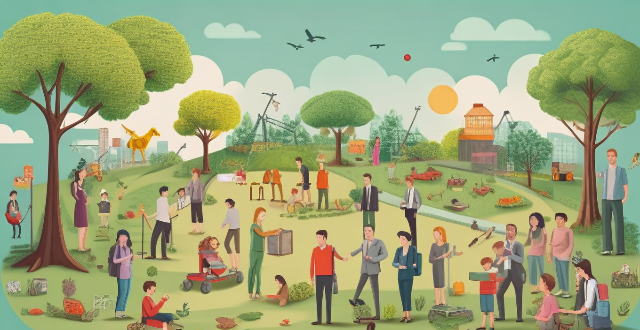
How can we ensure that climate change adaptation and mitigation efforts are inclusive of vulnerable populations ?
Climate change affects everyone unevenly, with vulnerable populations often facing greater risks. To ensure inclusivity in climate adaptation and mitigation, efforts should include conducting needs assessments, integrating rights-based approaches into policies, providing resources and support, building resilience through education and capacity building, promoting equitable infrastructure development, addressing health impacts, fostering inclusive economic opportunities, and ensuring legal protections. By prioritizing these actions, we can move towards a more resilient and equitable world for all.
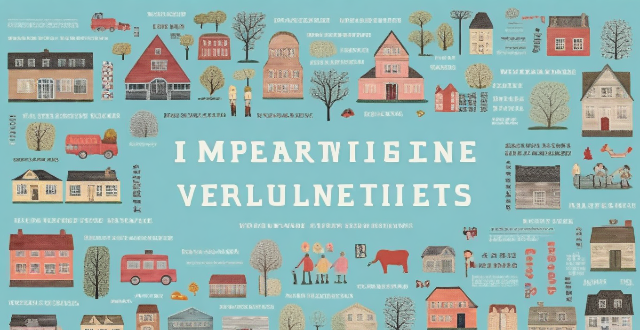
How can we involve vulnerable populations in climate decision-making processes to protect their rights ?
The text discusses the importance of including vulnerable populations, such as the poor, elderly, children, and those with disabilities, in climate decision-making processes. It highlights the reasons for their inclusion, strategies to facilitate their participation, effective communication channels, policy recommendations, and success stories. The text emphasizes the need for accessibility, language support, child-friendly approaches, financial support, community workshops, door-to-door outreach, social media campaigns, and art and storytelling to reach out to these populations. It also suggests legal mandates, funding priorities, and monitoring and evaluation as policies to support inclusivity. Overall, the text argues that involving vulnerable populations in climate decision-making is crucial for equity, diversity of perspectives, and effective solutions.

How are small island nations particularly vulnerable to the effects of climate change ?
Small island nations are uniquely susceptible to climate change due to their geographical, environmental, and socio-economic traits. Limited land area and low elevation make them prone to inundation and flooding. Coral reef degradation and biodiversity threats further exacerbate these vulnerabilities. Economically, the tourism industry and fisheries are at risk, while human displacement and migration become pressing issues. Adaptation and resilience challenges include limited resources and a heavy reliance on international support. Addressing these challenges requires global cooperation and targeted strategies.
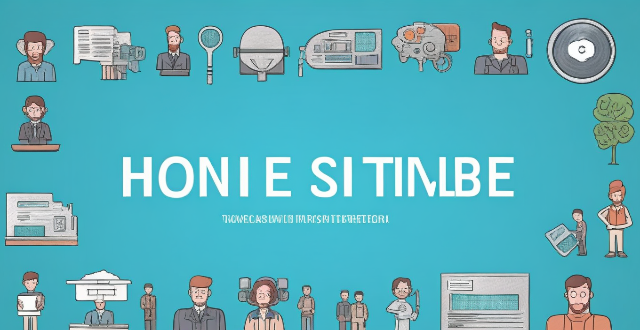
How can we ensure that the benefits of sustainable development reach everyone, including the most vulnerable groups ?
The text discusses how sustainable development can be ensured to reach everyone, including the most vulnerable groups. It suggests a multifaceted approach that involves balancing economic growth, social inclusion, and environmental protection. The strategies include developing inclusive policies, ensuring access to opportunities like education and training, investing in sustainable infrastructure and accessible services, encouraging community engagement and advocacy, and implementing monitoring and accountability measures. By working together across sectors and levels of society, a more equitable and sustainable future can be built for all.

How can we ensure equitable access to climate adaptation resources within communities ?
The article discusses strategies for ensuring equitable access to climate adaptation resources within communities. It emphasizes the importance of community participation, transparent planning processes, fair allocation of resources, diverse funding mechanisms, and monitoring and evaluation. The goal is to build resilient and sustainable communities that can cope with the impacts of climate change.

How does climate change disproportionately affect marginalized communities ?
This essay discusses how climate change affects marginalized communities, including low-income populations, indigenous people, and residents of coastal areas. It explains why these communities are more vulnerable to the effects of climate change and provides examples of how they are affected. The essay concludes that addressing these disparities requires targeted interventions that prioritize the protection and empowerment of marginalized communities.

What factors should be considered when evaluating the impact of climate policies on different communities ?
When evaluating the impact of climate policies on different communities, several factors need to be considered. These include economic factors such as income levels and employment opportunities, social factors like population density and education levels, environmental factors including geographical location and biodiversity, political factors such as policy support and legal frameworks, and health factors such as public health infrastructure and mental health. Taking these factors into account ensures that the unique circumstances and needs of different communities are addressed, leading to more effective and equitable outcomes.

How can we mitigate the impacts of climate change on impoverished communities ?
Mitigating the Impacts of Climate Change on Impoverished Communities. Climate change poses a significant threat to all communities, but its impact is disproportionately felt by impoverished communities. These communities often lack the resources and infrastructure necessary to adapt to changing environmental conditions. Therefore, it is crucial to take proactive measures to mitigate the impacts of climate change on these vulnerable populations. Here are some strategies that can be employed: 1. Promote Sustainable Agriculture 2. Improve Access to Clean Energy 3. Enhance Water Management 4. Build Resilience through Infrastructure Development 5. Strengthen Health Systems 6. Enhance Disaster Risk Reduction 7. Support Local Governance and Community Participation 8. Foster International Cooperation

How can we address the root causes of climate conflicts ?
Addressing the root causes of climate conflicts requires a comprehensive approach that includes promoting sustainable development, strengthening governance and institutions, empowering marginalized communities, and fostering international cooperation. By investing in renewable energy sources, encouraging sustainable agriculture practices, implementing green infrastructure projects, establishing transparent decision-making processes, promoting decentralization, strengthening legal frameworks, providing education and training to marginalized communities, supporting community-led initiatives, ensuring gender equality, sharing knowledge and expertise globally, coordinating climate policies, and providing financial support to vulnerable countries, we can build a more resilient world where everyone has equal access to resources without fear of violence or oppression.

What is the relationship between biodiversity and traditional knowledge ?
The text discusses the complex interrelationship between biodiversity and traditional knowledge, highlighting how each influences and shapes the other in various ways. It explains that communities living in diverse ecosystems develop unique practices adapted to their surroundings, such as specific crop rotations or intercropping methods suited to local biodiversity. The availability of certain species also influences dietary habits, with coastal communities relying heavily on seafood while inland communities depend more on terrestrial resources. Furthermore, high biodiversity regions often lead to extensive knowledge about medicinal plants, with Indigenous communities having long histories of using local flora for healing. The need for sustainable harvesting of these plants can lead to traditional conservation practices like rotating harvest areas or planting more of certain species to ensure their survival. On the other hand, traditional knowledge often includes practices for managing resources sustainably, such as fishing techniques that do not deplete fish populations or agricultural methods that maintain soil fertility. In many cultures, certain areas are considered sacred and are protected from exploitation, serving as de facto conservation reserves. However, as biodiversity declines, so does the traditional knowledge associated with it. The loss of certain species can lead to the disappearance of associated cultural practices and knowledge. With diminished biodiversity, traditional knowledge becomes less effective, leaving communities vulnerable to ecological shifts. In conclusion, the relationship between biodiversity and traditional knowledge is one of mutual dependence and influence. While biodiversity shapes the development of traditional knowledge, this knowledge also plays a critical role in maintaining and conserving biodiversity. Preserving both is essential for the well-being of our planet and its people.
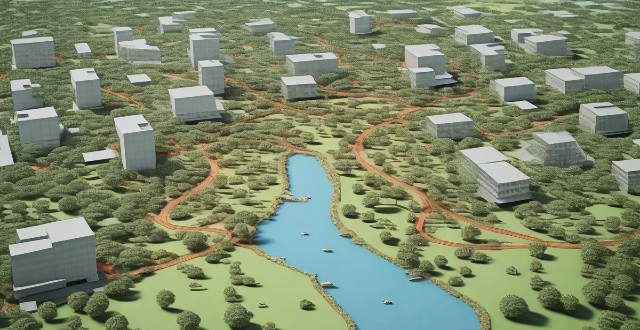
How can communities improve their resilience to climate change ?
Communities worldwide face challenges due to climate change, necessitating enhanced resilience. Key strategies include building awareness through education and training, upgrading infrastructure with sustainable solutions, conserving ecosystems, integrating climate considerations into planning, diversifying economies, and engaging communities in decision-making processes. These efforts not only help communities adapt but also contribute globally to combating climate change.

How can we involve marginalized communities in climate decision-making processes ?
Involving marginalized communities in climate decision-making is crucial for equitable solutions. Identify and engage these communities, build trust, provide info & resources, incorporate local knowledge, ensure participation, address power imbalances, and monitor progress.

How does climate change legislation address the concerns of environmental justice and equity ?
Climate change legislation should address environmental justice and equity by prioritizing vulnerable communities, promoting participatory decision-making, ensuring access to clean energy and sustainable practices, and addressing environmental health disparities. This will create more equitable and effective climate policies for all communities.

How can we achieve climate justice in the face of global warming ?
This article discusses strategies to achieve climate justice amid global warming, focusing on recognizing the impact on vulnerable populations, promoting equitable access to sustainable energy, supporting environmentally sustainable economic development, and advocating for international cooperation in climate negotiations.

How might extreme weather events due to climate change impact children's access to safe housing and shelter ?
This article discusses the impact of extreme weather events on children's access to safe housing and shelter. It highlights how these events can cause destruction of homes and communities, displacement and homelessness, health risks, psychological trauma, and disruptions in education. The article emphasizes the need for concerted efforts from governments, communities, and individuals to address these challenges and build more resilient infrastructure.

Do immigration policies influence language preservation or loss within communities ?
Immigration policies can significantly affect language preservation and loss in communities by changing demographics, shaping language education, community support, and intergenerational transmission. Open policies may increase diversity, while restrictive ones can lead to language loss.
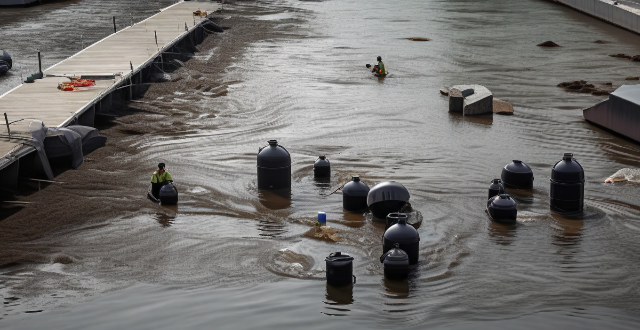
How can we ensure equitable access to water resources for all communities ?
Ensuring equitable access to water resources for all communities requires a multi-faceted approach, including investment in infrastructure, promotion of sustainable water management practices, implementation of policies and regulations, collaboration with local communities, and monitoring progress.
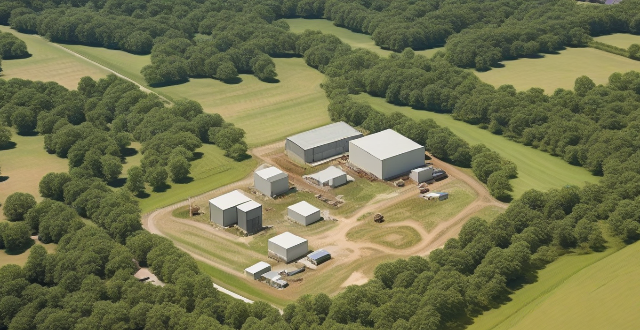
How can we ensure that climate adaptation strategies are equitable and benefit all members of society ?
Ensuring equitable climate adaptation strategies is crucial to protect vulnerable groups and future generations from disproportionate impacts of climate change. Key considerations include recognizing inequalities, involving affected communities in decision-making, fairly distributing costs and benefits, building capacity through education and skills development, mainstreaming equity into policies, and focusing on long-term sustainability.